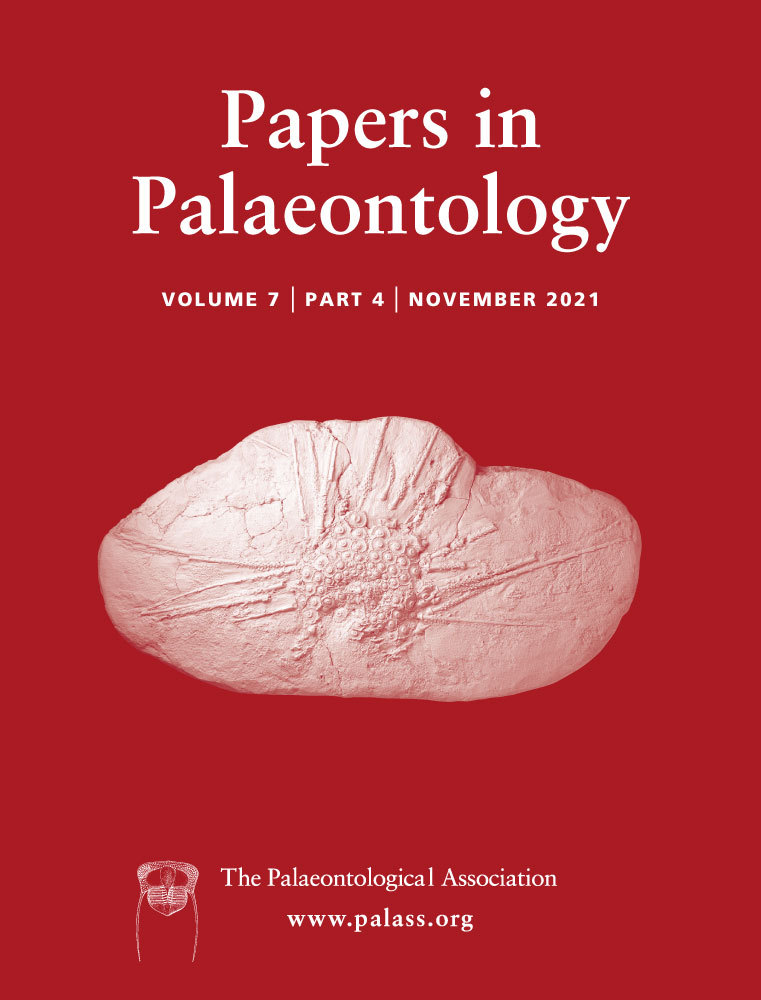Response to Comment on: The ichnogenus Lumbricaria Münster from the Upper Jurassic of Germany interpreted as faecal strings of ammonites
This Discussion relates to an Original Article by Knaust and Hoffman published in Palaeontology, 7 (2). See also https://doi.org/10.1002/spp2.1311 and https://doi.org/10.1002/spp2.1373
We wish to thank Diego A. Kietzmann and Graciela S. Bressan for their Comment on our article and for provoking discussion about the interpretation of the ichnogenus Lumbricaria Münster in Goldfuss, 1831 (Kietzmann & Bressan 2021). Our contribution specifically dealt with these faecal strings from their type area, the Tithonian (Upper Jurassic) of southern Germany. Given the recent description of Lumbricaria intestinum from the Upper Jurassic of the Neuquén Basin in Argentina, we briefly evaluated these forms with respect to their potential producer based on Kietzmann & Bressan (2019). We apologize if we gave the impression of not using all the information provided by Kietzmann & Bressan (2019) and will try to explain our rationale behind that.
Two main points of discussion are raised in the Comment by Kietzmann and Bressan: (1) the content and morphology of the Argentinian Lumbricaria; and (2) the interpretation of their producer.
Like Lumbricaria from Germany, the Argentinian specimens consist of saccocomid ossicles and not algal cysts as erroneously mentioned by us. Regarding Haude (2019), in our table 1 we were simply referring to his interpretation of Lumbricaria as ‘faeces … discarded … possibly by cephalopods’ (Haude 2019, p. 275) and not to his described early Jurassic ‘worm holothurians’ (Haude 2019, pp 267–271).
Kietzmann & Bressan (2019) described a L. intestinum morphotype 3 with ‘a spiral compact pattern, without space among segments’ and state in their Comment that this morphotype has not been reported from Germany. The term ‘spiral’ is somewhat misleading, because the figured specimens of this morphotype in Kietzmann & Bressan (2019, figs 3d, 4e–f) do not reveal a spiral morphology in spite of their tightness and compactness. They infer that it suggests ‘a benthic rather than nektic producer since there are no overlaps such as those in the examples from Germany’. In fact, this morphotype is common in Solnhofen and Nusplingen (Günter Schweigert, pers. comm. January 2021) and its ichnospecies has been maintained by us as Lumbricaria colon Münster in Goldfuss, 1831 (Knaust & Hoffmann 2021, p. 810, figs 1c–d, 3, 4). We tried to emphasize the presence of transitions between the two end members L. intestinum and L. colon, which we regard as the result of taphonomic effects (e.g. duration of exposure to the water column before settling down to the seafloor).
Furthermore, Kietzmann & Bressan (2019) favoured ‘holothurians as the most likely alternative producers of Lumbricaria’ in Argentina, but did not rule out an ‘origin as ammonite excrements’. This statement is principally repeated by us (Knaust & Hoffmann 2021, p. 817). However, based on our understanding, holothurians produce a wide range of faecal-string morphologies that are relatively unstable and disintegrate into suspension within hours of defaecation due to their poor binding of sediment. Condé et al. (1991) studied two holothurian species, of which pellets of Isostichopus badionotus disintegrated completely in about 8 h, whereas those of Holothuria (Halodeima) mexicana remained on the substrate after 25 h. Notwithstanding that difference, this relatively short time range would not significantly increase the preservation potential of these faeces, unless instant entombment by mucus or microbial activity occurred.
In contrast, we present data of faecal strings of extant Nautilus pompilius, which are morphologically similar to Lumbricaria and experience very little decomposition and alteration after four weeks in sea water. If preserved intact, holothurian faeces could be the fills and casts of intestines (i.e. cololites), where the resistant mucus-coated sediment within the intestine has the highest preservation potential of the decaying carcass (Knaust 2020a). Such forms occur in the lithographic limestones from southern Germany and were described as Rhizocorallites inaequalis Knaust, 2020b.
In Knaust & Hoffmann (2021, fig. 8), we showed a nautiloid cast (steinkern) containing parts of a faecal string resembling Lumbricaria isp. in its body chamber, that ‘could represent the remain of the cephalopod’s intestine or faecal matter’ (p. 819), although it cannot be ruled out that it could be ‘generated by another producer inside the empty chamber’ as suggested by Kietzmann & Bressan (2021).
On another note, Kietzmann & Bressan (2021) wondered about the constrictions that are diagnostic for Lumbricaria, and their formation in faeces produced by modern cephalopods. Little is known about the functional morphology and defaecation process of cephalopods, and Knaust & Hoffmann (2021, fig. 7) was meant to fill that gap with a modern analogue based on Nautilus pompilius. Specific gut constructions provide a clue for the presence of constrictions, but further neoichnological work would be needed to come up with a full explanation.
Hopefully our response provides some clarification of ambiguous parts in our article and helps to motivate further research on Lumbricaria, as well as coprolites and cololites in general.




